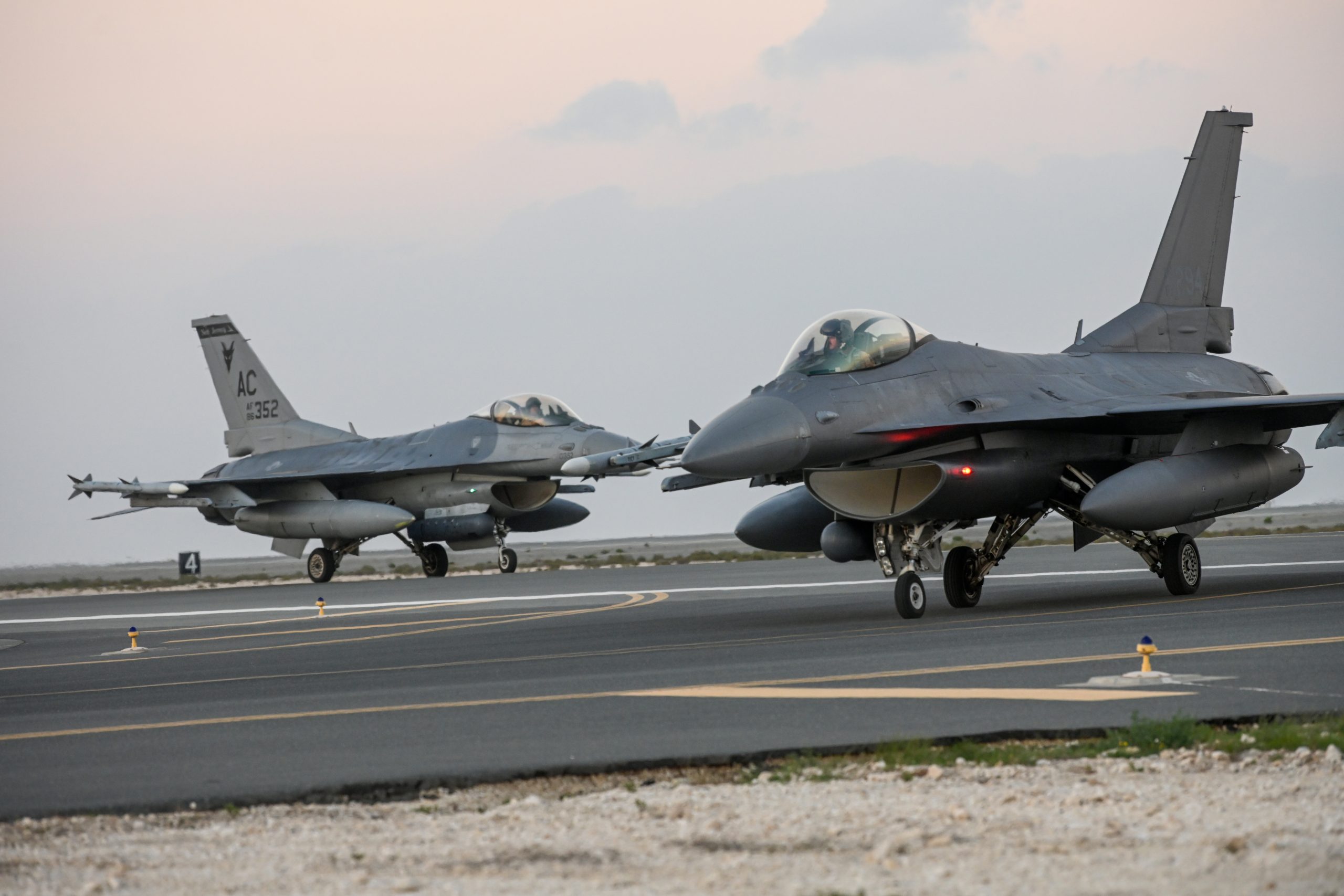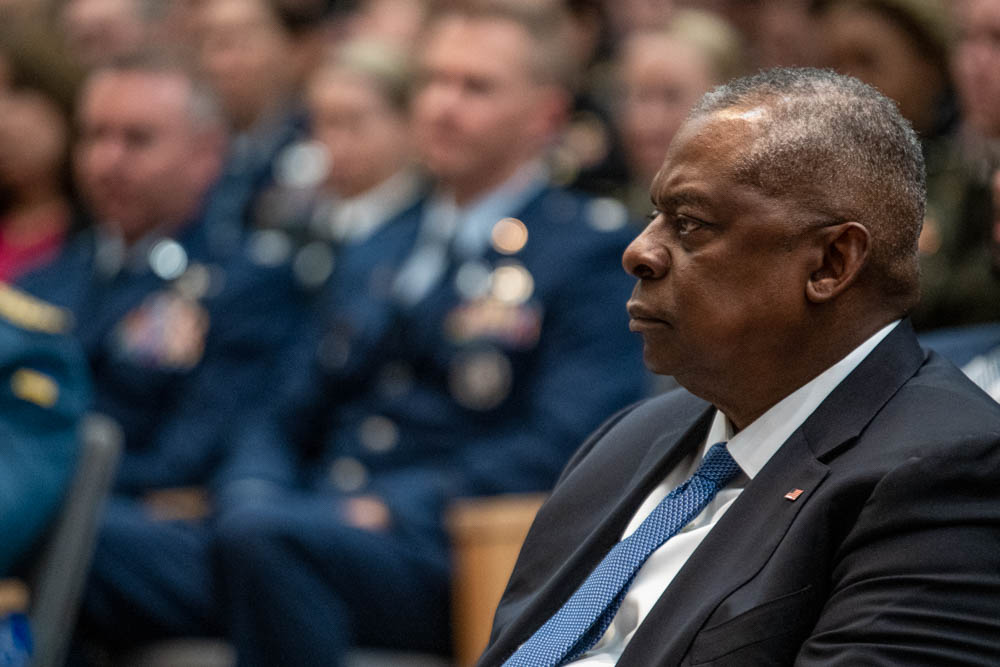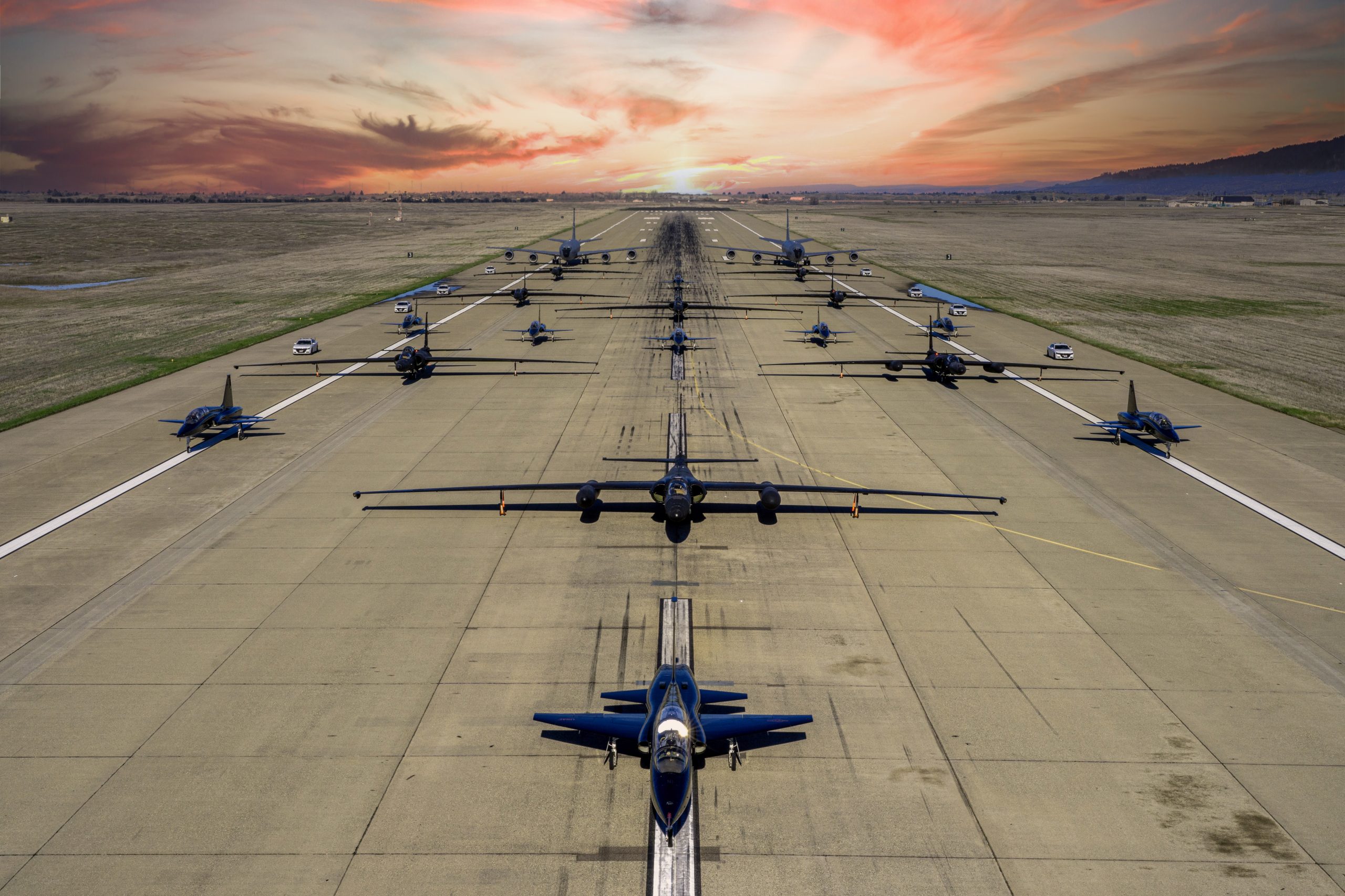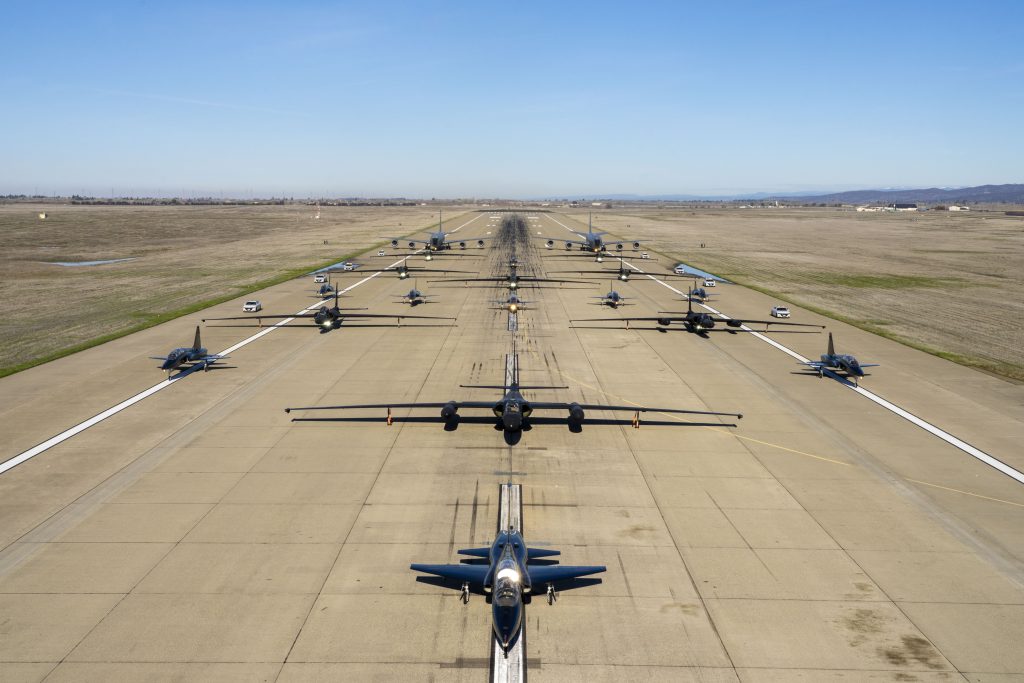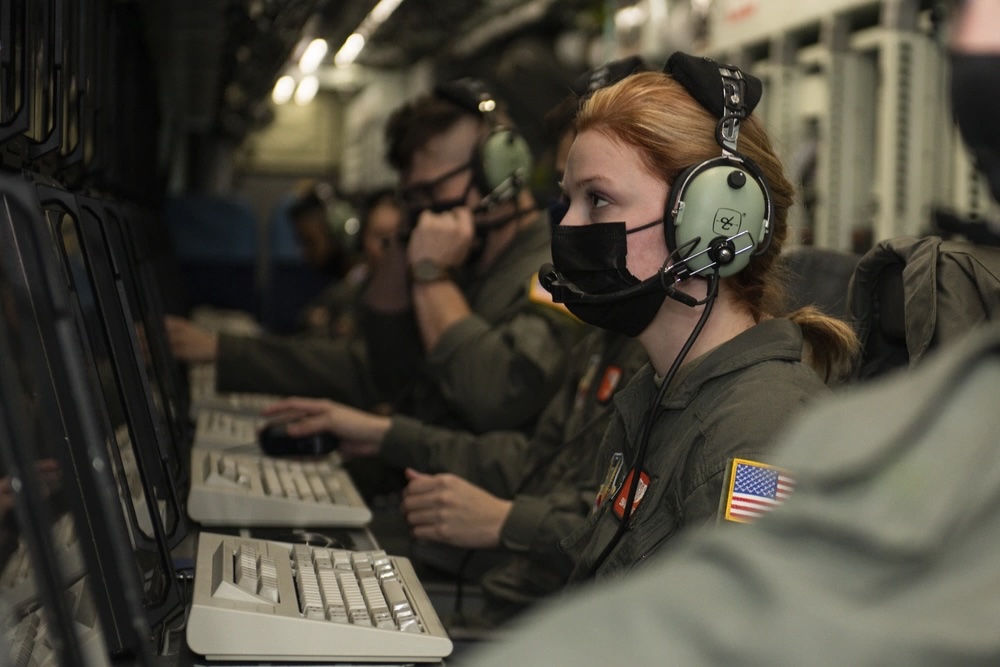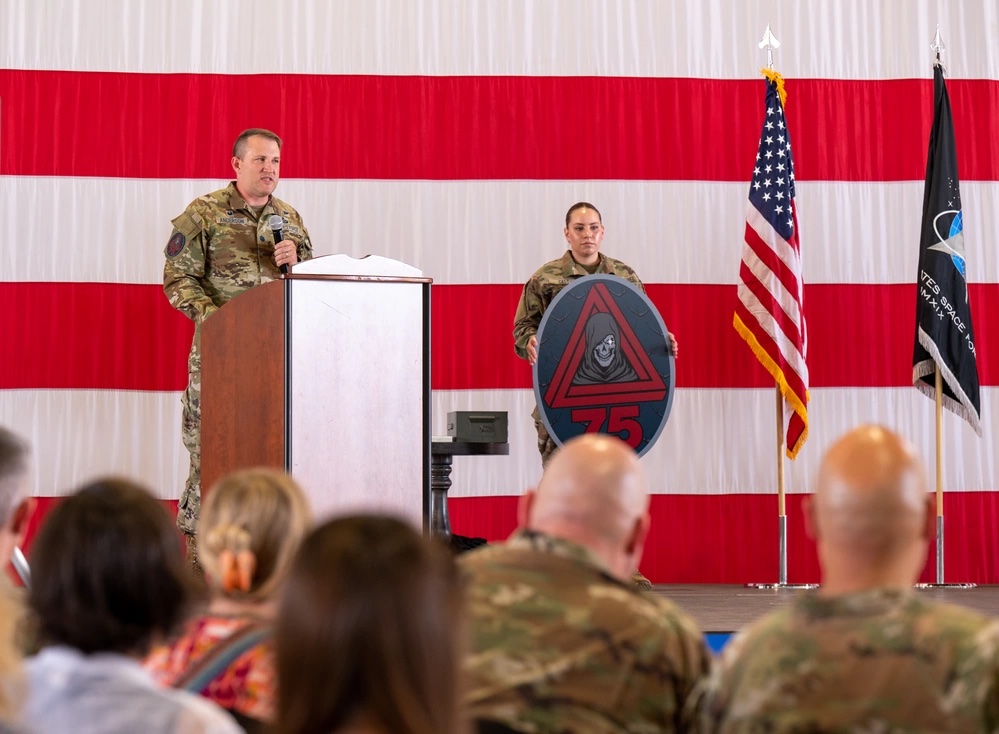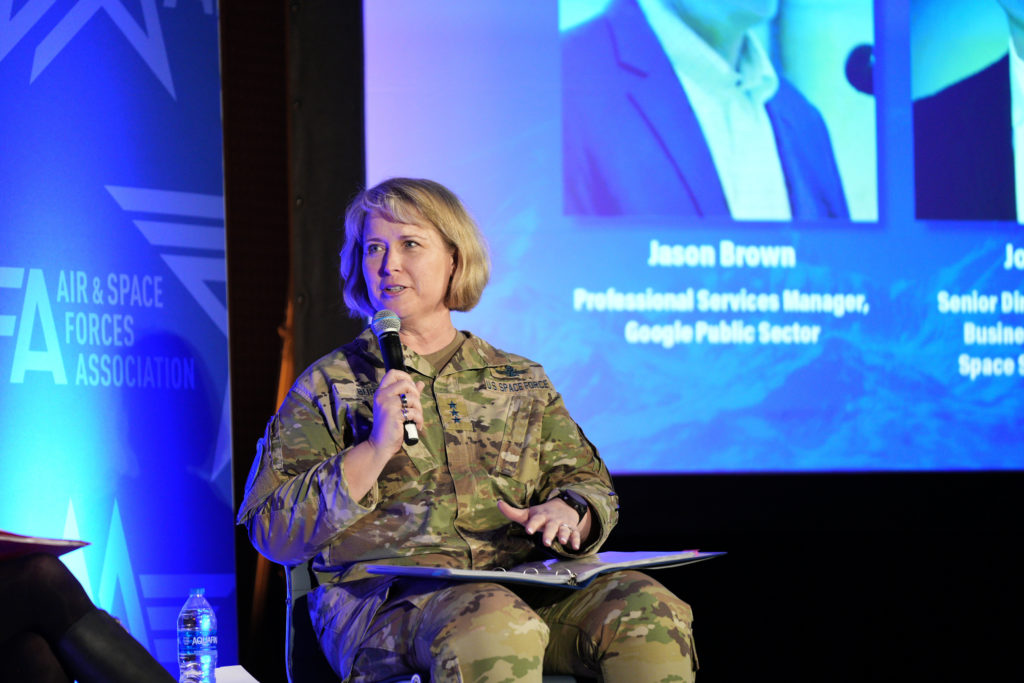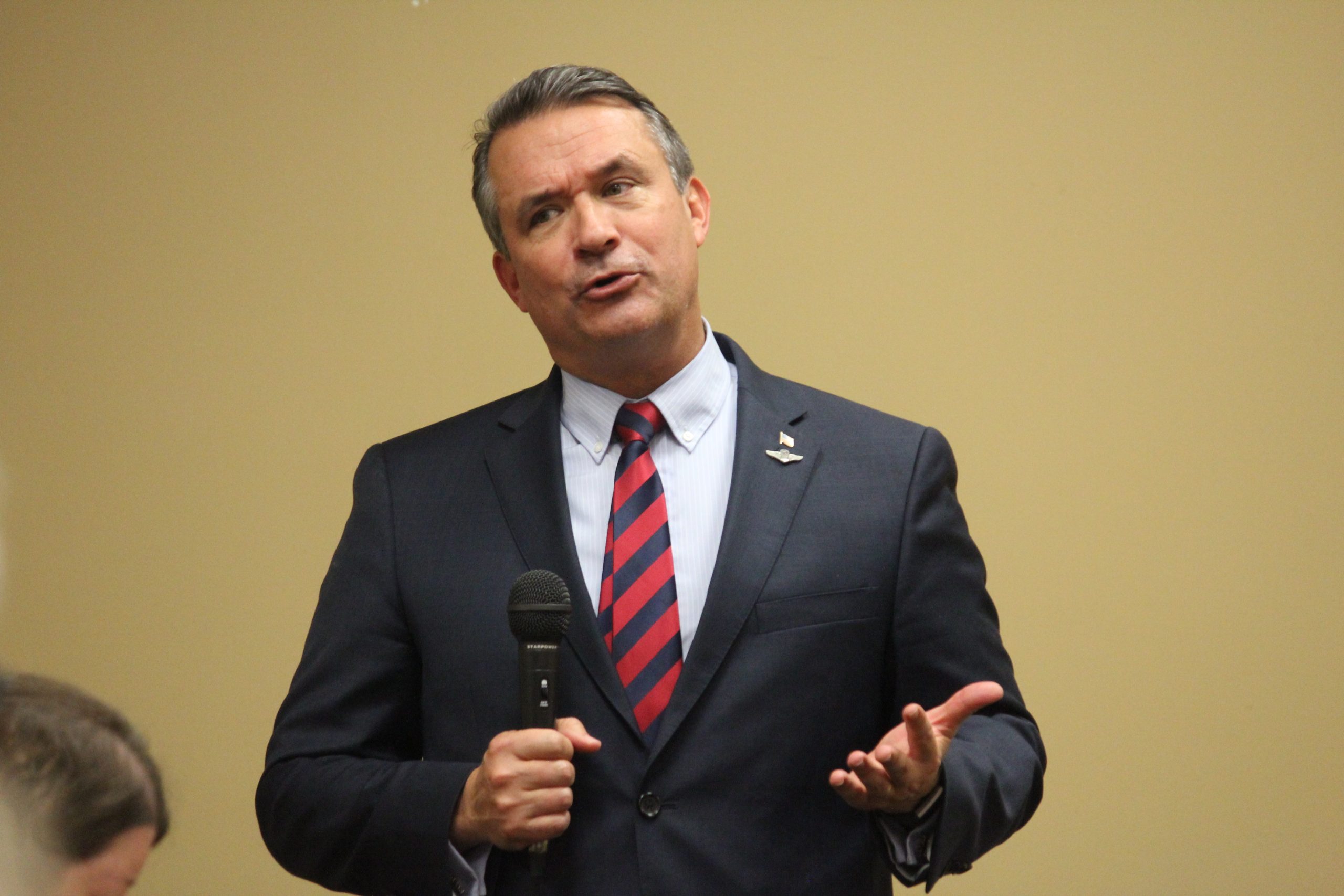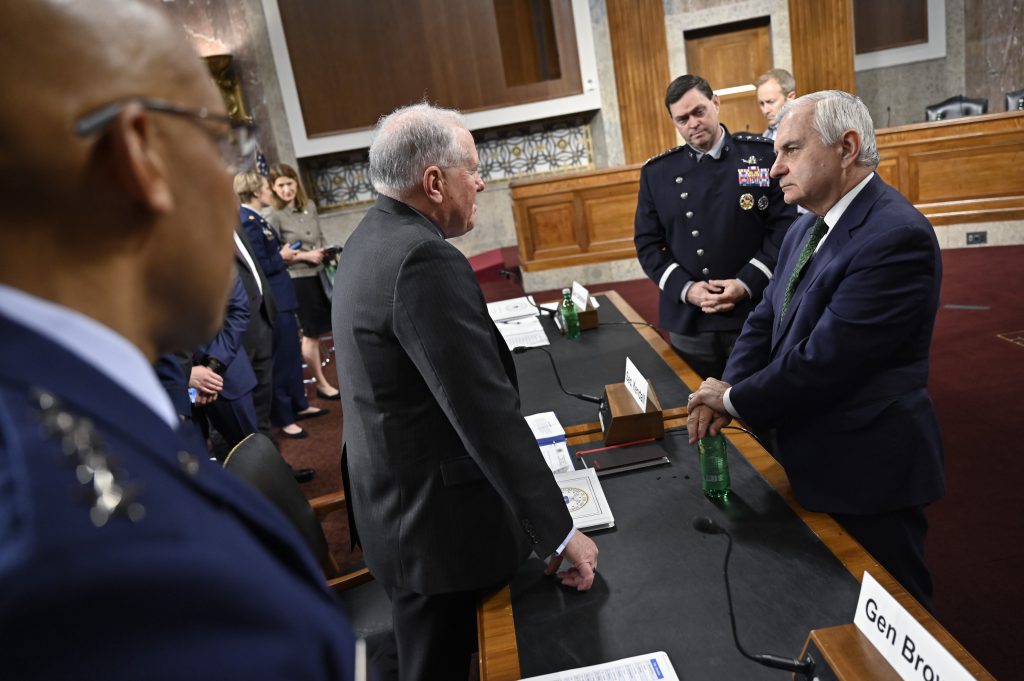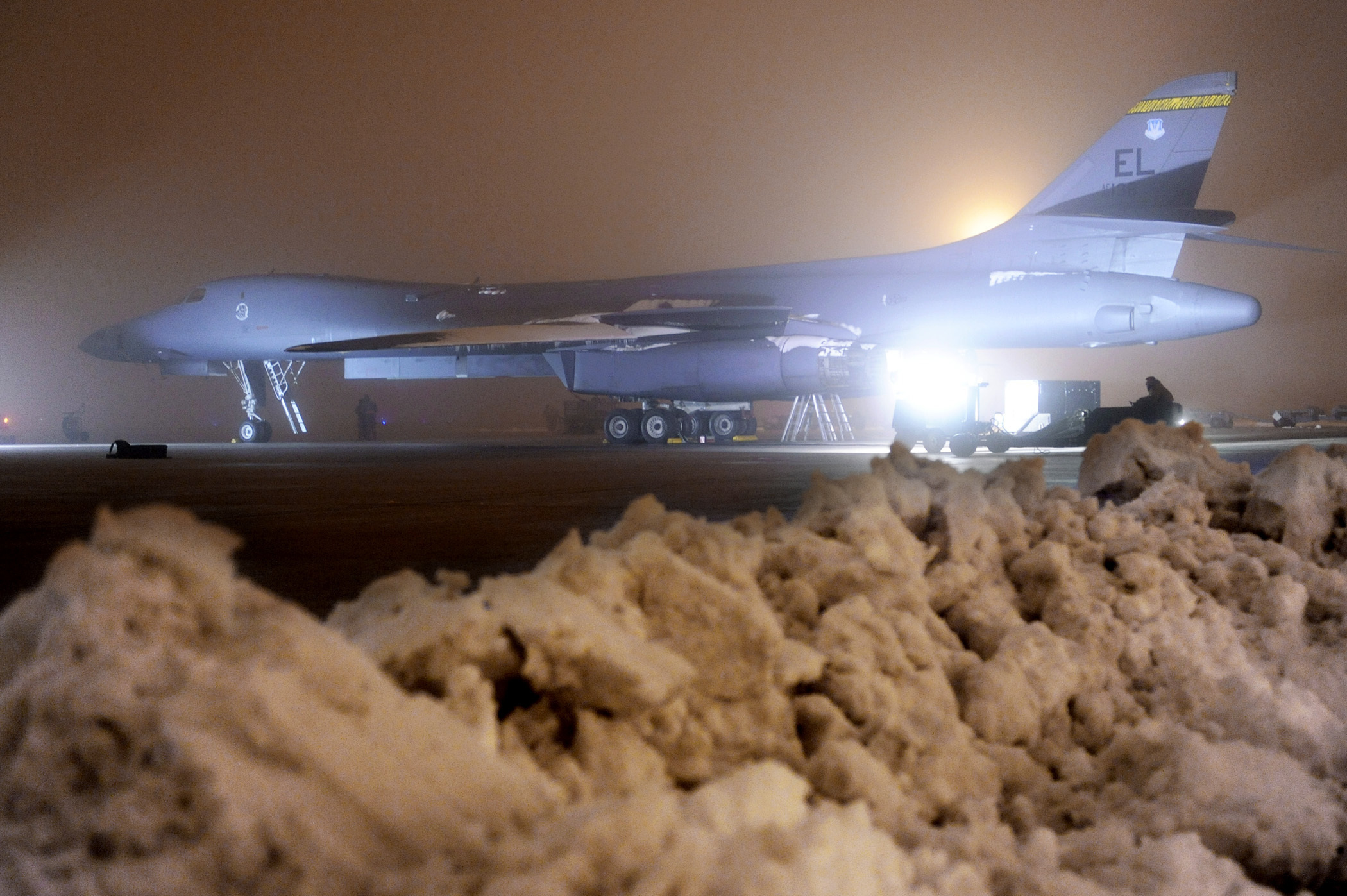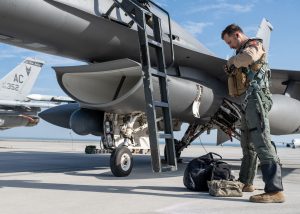
U.S. Air Force Capt. Eliot Shapleigh, an F-16 Fighting Falcon pilot, prepares to board an F-16 during Exercise Ballast Cannon 24.3 at an undisclosed location in the U.S. Central Command area of responsibility, Jan. 7, 2024. Ballast Cannon occurs nearly quarterly with the Royal Bahraini Air Force to support the U.S. Air Force’s rapid expeditionary capabilities by integrating Agile Combat Employment objectives for F-16 Fighting Falcon, KC-135 Stratotanker, and operational support personnel. The exercise allowed Total Force Airmen to generate unique solutions in austere environments. (U.S. Air Force photo by Senior Airman Sarah Williams)
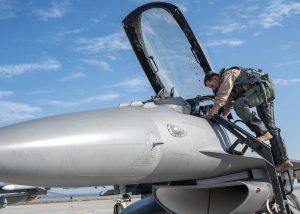
U.S. Air Force Capt. Eliot Shapleigh, an F-16 Fighting Falcon pilot, boards an F-16 during Exercise Ballast Cannon 24.3 at an undisclosed location in the U.S. Central Command area of responsibility, Jan. 7, 2024. Ballast Cannon occurs nearly quarterly with the Royal Bahraini Air Force to support the U.S. Air Force’s rapid expeditionary capabilities by integrating Agile Combat Employment objectives for F-16 Fighting Falcon, KC-135 Stratotanker, and operational support personnel. The long-standing relationships the U.S. Air Force has developed within the CENTCOM AOR enables regular and routine training, which advances the coalition’s ability to become a seamless operational force across every warfighting domain. (U.S. Air Force photo by Senior Airman Sarah Williams)
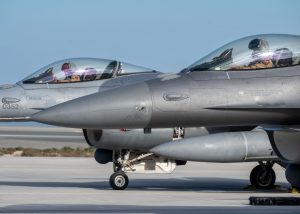
U.S. Air Force pilots conduct preflight checks in F-16 Fighting Falcons during Exercise Ballast Cannon 24.3 at an undisclosed location in the U.S. Central Command area of responsibility, Jan. 7, 2024. Ballast Cannon occurs nearly quarterly with the Royal Bahraini Air Force to support the U.S. Air Force’s rapid expeditionary capabilities by integrating Agile Combat Employment objectives for F-16 Fighting Falcon, KC-135 Stratotanker, and operational support personnel. (U.S. Air Force photo by Senior Airman Sarah Williams)
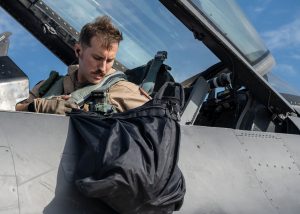
U.S. Air Force Capt. Eliot Shapleigh, an F-16 Fighting Falcon pilot, conducts a preflight check during Exercise Ballast Cannon 24.3 at an undisclosed location in the U.S. Central Command area of responsibility, Jan. 7, 2024. Ballast Cannon occurs nearly quarterly with the Royal Bahraini Air Force to support the U.S. Air Force’s rapid expeditionary capabilities by integrating Agile Combat Employment objectives for F-16 Fighting Falcon, KC-135 Stratotanker, and operational support personnel. American Airman support dynamic operations while seamlessly integrating with coalition forces. (U.S. Air Force photo by Senior Airman Sarah Williams)
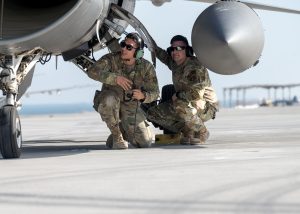
U.S. Air Force Senior Airman Micheal Ortolani, an F-16 Fighting Falcon crew chief, and Tech. Sgt. Jonathan Bollock, a logistics readiness squadron Airman, perform preflight checks during Exercise Ballast Cannon 24.3 at an undisclosed location in the U.S. Central Command area of responsibility, Jan. 7, 2024. Ballast Cannon occurs nearly quarterly with the Royal Bahraini Air Force to support the U.S. Air Force’s rapid expeditionary capabilities by integrating Agile Combat Employment objectives for F-16 Fighting Falcon, KC-135 Stratotanker, and operational support personnel. (U.S. Air Force photo by Senior Airman Sarah Williams)
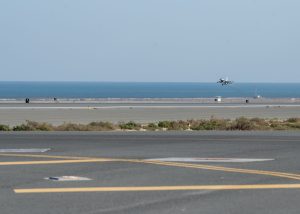
A U.S. Air Force F-16 Fighting Falcon takes off during Exercise Ballast Cannon 24.3 at an undisclosed location in the U.S. Central Command area of responsibility, Jan. 7, 2024. Ballast Cannon occurs nearly quarterly with the Royal Bahraini Air Force to support the U.S. Air Force’s rapid expeditionary capabilities by integrating Agile Combat Employment objectives for F-16 Fighting Falcon, KC-135 Stratotanker, and operational support personnel. The exercise allowed Total Force Airmen to generate unique solutions in austere environments. (U.S. Air Force photo by Senior Airman Sarah Williams)
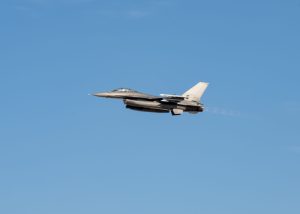
A U.S. Air Force F-16 Fighting Falcon takes off during Exercise Ballast Cannon 24.3 at an undisclosed location in the U.S. Central Command area of responsibility, Jan. 7, 2024. Ballast Cannon occurs nearly quarterly with the Royal Bahraini Air Force to support the U.S. Air Force’s rapid expeditionary capabilities by integrating Agile Combat Employment objectives for F-16 Fighting Falcon, KC-135 Stratotanker, and operational support personnel. Agile Combat Employment shifts generation of airpower from large centralized bases, to networks of smaller, dispersed locations, or cluster bases to increase survivability and complicate adversary planning. (U.S. Air Force photo by Senior Airman Sarah Williams)
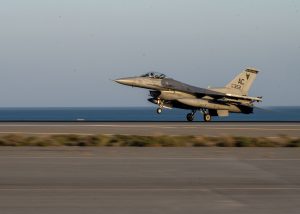
A U.S. Air Force F-16 Fighting Falcon lands at an undisclosed location in the U.S. Central Command area of responsibility during Exercise Ballast Cannon 24.3, Jan. 7, 2024. Ballast Cannon occurs nearly quarterly with the Royal Bahraini Air Force to support the U.S. Air Force’s rapid expeditionary capabilities by integrating Agile Combat Employment objectives for F-16 Fighting Falcon, KC-135 Stratotanker, and operational support personnel. Agile Combat Employment shifts generation of airpower from large centralized bases, to networks of smaller, dispersed locations, or cluster bases to increase survivability and complicate adversary planning. (U.S. Air Force photo by Senior Airman Sarah Williams)
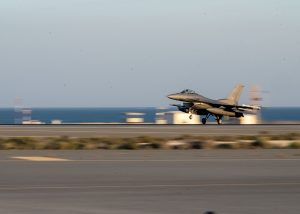
A U.S. Air Force F-16 Fighting Falcon lands at an undisclosed location in the U.S. Central Command area of responsibility during Exercise Ballast Cannon 24.3, Jan. 7, 2024. Ballast Cannon occurs nearly quarterly with the Royal Bahraini Air Force to support the U.S. Air Force’s rapid expeditionary capabilities by integrating Agile Combat Employment objectives for F-16 Fighting Falcon, KC-135 Stratotanker, and operational support personnel. Agile Combat Employment shifts generation of airpower from large centralized bases, to networks of smaller, dispersed locations, or cluster bases to increase survivability and complicate adversary planning. (U.S. Air Force photo by Senior Airman Sarah Williams)
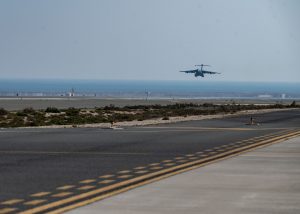
A C-17 Globemaster III lands at an undisclosed location in the U.S. Central Command area of responsibility, Jan. 5, 2024. The C-17 was a part of an exercise that occurs nearly quarterly with the Royal Bahraini Air Force to support the U.S. Air Force’s rapid expeditionary capabilities by integrating Agile Combat Employment objectives. (U.S. Air Force photo by Senior Airman Sarah Williams)
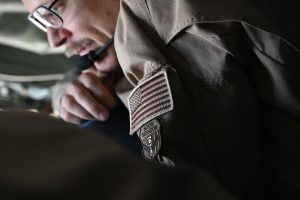
U.S. Air Force Senior Master Sgt. Myron Somero, boom operator evaluator, communicates with Tech. Sgt. Steven Hannah during an aerial refueling for Ballast Cannon 24.3, Jan. 7, 2024. As a routine exercise occurring nearly quarterly with the Royal Bahraini Air Force, this iteration supports the U.S. Air ForceÕs rapid expeditionary capabilities by integrating Agile Combat Employment objectives for F-16 Fighting Falcon, KC-135 Stratotanker, and operational support personnel. (U.S. Air Force photo by Staff Sgt. Jasmonet Holmes)

A U.S. Air Force F-16 Fighting Falcon prepares for an aerial refueling over an undisclosed location within the U.S. Central Command area of responsibility during the quarterly Ballast Cannon, Jan. 7, 2024. As a routine exercise occurring nearly quarterly with the Royal Bahraini Air Force, this iteration supports the U.S. Air Force’s rapid expeditionary capabilities by integrating Agile Combat Employment objectives for F-16 Fighting Falcon, KC-135 Stratotanker, and operational support personnel. (U.S. Air Force photo by Staff Sgt. Jasmonet Holmes)
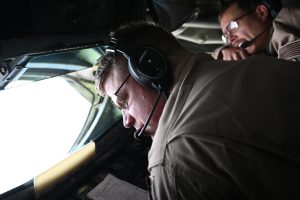
U.S. Air Force Tech. Sgt. Steven Hannah, a U.S. Air Force KC-135 Stratotanker boom operator, conducts preflight checks before takeoff during Exercise Ballast Cannon 24.3 at an undisclosed location within the U.S. Central Command area of responsibility, Jan. 7, 2024. Ballast Cannon is a routine bilateral exercise occurring nearly quarterly with the Royal Bahraini Air Force, which focuses on strengthening the bonds between coalition forces and building a foundation for future engagements in support of the combined defense of the Arabian Peninsula. (U.S. Air Force photo by Staff Sgt. Jasmonet Holmes)
